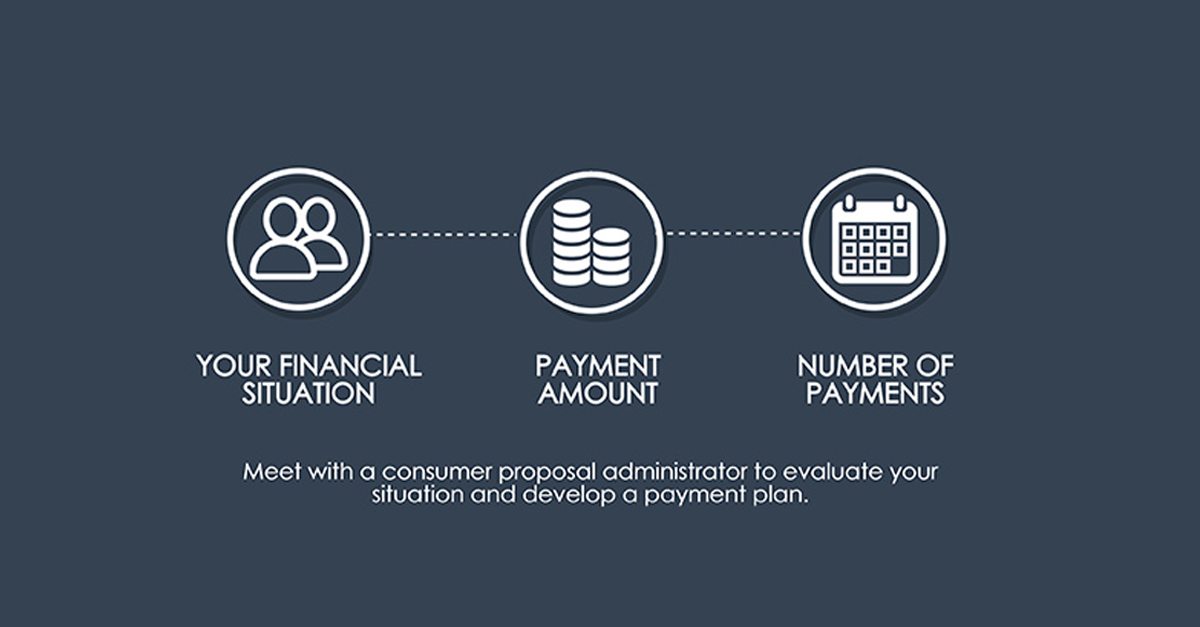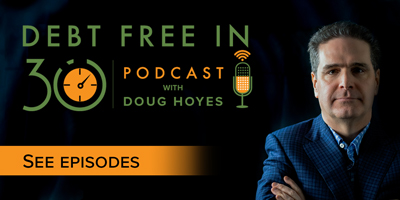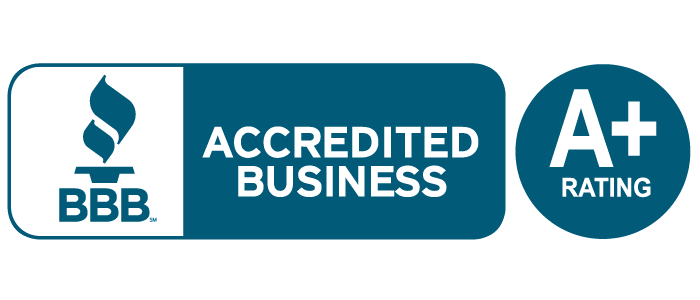
Consumer proposals in Canada are a debt relief solution for individuals drowning in debt, offering a structured plan for financial recovery. In this article, we’ll explore how a consumer proposal works, explaining eligibility criteria, the filing process, legal protection, creditor considerations, and the pros and cons of this debt management strategy.
Table of Contents
Consumer proposal eligibility: Do you qualify?
I. Who can apply for a consumer proposal?
To be eligible to file a consumer proposal:
-
You must be an individual. An incorporated business cannot file a consumer proposal but can file a Division 1 proposal as an alternative.
-
You must be insolvent, meaning you cannot pay your unsecured debts as they come due.
-
Your total debts, excluding your mortgage, cannot exceed $250,000. If you exceed this debt threshold, you can file a Division 1 proposal.
-
You must have a stable income to afford the monthly payments.
-
You cannot be in an active consumer proposal already.
II. Types of debts covered
A consumer proposal deals with unsecured debts. This includes credit card debt, student loans, lines of credit, payday loans, personal loans, and even tax debt.
Secured debt, like a car loan or your mortgage, is not affected by a consumer proposal. As long as you continue making loan payments to your secured lender, you can keep these assets. You can, if you choose, voluntarily surrender a secured asset and deal with any residual or shortfall through your consumer proposal.
III. Common financial situations eligible for a consumer proposal
A consumer proposal is a debt solution for Canadians facing financial difficulties looking to avoid personal bankruptcy.
Typical financial scenarios might include:
-
overwhelming debt
-
debts with very high interest rates
-
missed and overdue debt payments
-
a wage garnishment
-
collection calls and legal action by creditors
-
a CRA requirement to pay
-
asset protection while you negotiate a debt settlement and payment plan with your creditors
The process of filing a consumer proposal
Here is a brief overview of the consumer proposal process:
I. Consultation with a Licensed Insolvency Trustee (LIT)
A consumer proposal is a serious financial decision to be considered carefully. The process begins with a consultation with a Licensed Insolvency Trustee.
The role of the LIT is to review your specific circumstances, including income, expenses, and debts. This assessment helps determine if a consumer proposal is a suitable option to deal with your debts. In a consumer proposal, the LIT is sometimes called the consumer proposal administrator.
II. Developing the proposal
The Licensed Insolvency Trustee will work with the debtor to develop a realistic repayment plan. Your offer will depend on any assets you own, how much debt you owe and to whom (some creditors expect higher settlements), and any surplus income you might have.
The objective is to negotiate a settlement offer that results in monthly payments that are significantly less than the debt payments you are making today.
The formal proposal to creditors outlines how much you can afford to pay and the terms of the proposal. Proposal payments can be monthly, tied to your pay period or lump sum.
One final note: The cost of a consumer proposal is covered by your agreed upon proposal payments. There is no upfront fee and no separate charge. The trustee is paid out of the funds distributed to the creditors.
III. Protection and legal implications
A consumer proposal is a legal, legislated debt solution available through the Bankruptcy and Insolvency Act. It can only be filed with a Licensed Insolvency Trustee.
One key advantage of a consumer proposal is the automatic stay of proceedings, providing legal protection against creditors’ legal actions. Again, a consumer proposal can stop unsecured creditors but not secured creditors (unless you return the secured asset).
While a consumer proposal will impact your credit score, the impact is shorter than for bankruptcy. Most people can obtain a new credit card while still in a consumer proposal. This new card can help you rebuild your credit rating after filing, by establishing a new and better payment history on your credit report.
IV. Creditor consideration and voting
Once the paperwork is signed, your Licensed Insolvency Trustee submits the consumer proposal to the Office of the Superintendent of Bankruptcy (OSB) and sends a copy to your creditors.
Individually, your creditors review your proposal and can decide to:
- Accept your terms as filed (vote yes)
- Reject your terms (vote no)
- Reject your terms and ask for a creditors’ meeting
- Do nothing
Your creditors have 45 days to vote on the proposal. If the majority of creditors vote (in dollar value) to accept your proposal, it is binding on all unsecured creditors.
Creditors can request a meeting of creditors, although this is rare. Before that first meeting, your trustee may work with you and any dissenting creditors to renegotiate acceptable terms.
V. Debt repayment and counselling
Your responsibilities in your consumer proposal are to make your required payments and attend two financial counselling sessions. During these sessions, your credit counsellor will discuss budgeting and rebuilding your credit after a consumer proposal.
Other things to know:
-
You can pay off your proposal early. Your total payments are fixed. But, once your creditors accept your proposal terms, you can make additional payments or pay the balance off at any time. The sooner you complete your proposal, the sooner the recovery process begins.
-
You can defer up to two payments. If you fall three payments in arrears, your proposal will be deemed to be annulled. If this happens, your debts are reinstated, and creditors can take legal action to pursue the outstanding debt.
-
No income reporting is required. Unlike bankruptcy, you do not need to report your income and expenses every month.
It is critical to complete your requirements in order to obtain your certificate of full performance, which will wipe out your debts.
A consumer proposal example
Mark owes $65,000 in credit card and other unsecured debts. He owns a home with $14,000 in equity (after paying all potential selling costs), and his household income is $5,000 a month. Mark is married and has one child. With this information, the trustee determines that Mark’s potential bankruptcy costs would be $20,600. This includes the equity value in his home and potential surplus income payments.
In this scenario, Mark could make an offer to pay his creditors $21,000 rather than file for bankruptcy. If he pays this amount over the maximum of 5 years, his payments would be $350 a month.
The end result of all this is that Mark pays back only $21,000 of his original $65,000 in debts, and he pays no interest.
If you’re wondering what your possible payment plan could be based on average settlements, try our consumer proposal calculator.
Conclusion
While this article explores the process, eligibility criteria, and potential outcomes of a consumer proposal, take the next step towards being debt free and contact us to book a free consultation with a Licensed Insolvency Trustee about your debt relief options. We’ll explain more about a consumer proposal and also review other options like debt consolidation and credit counselling.






